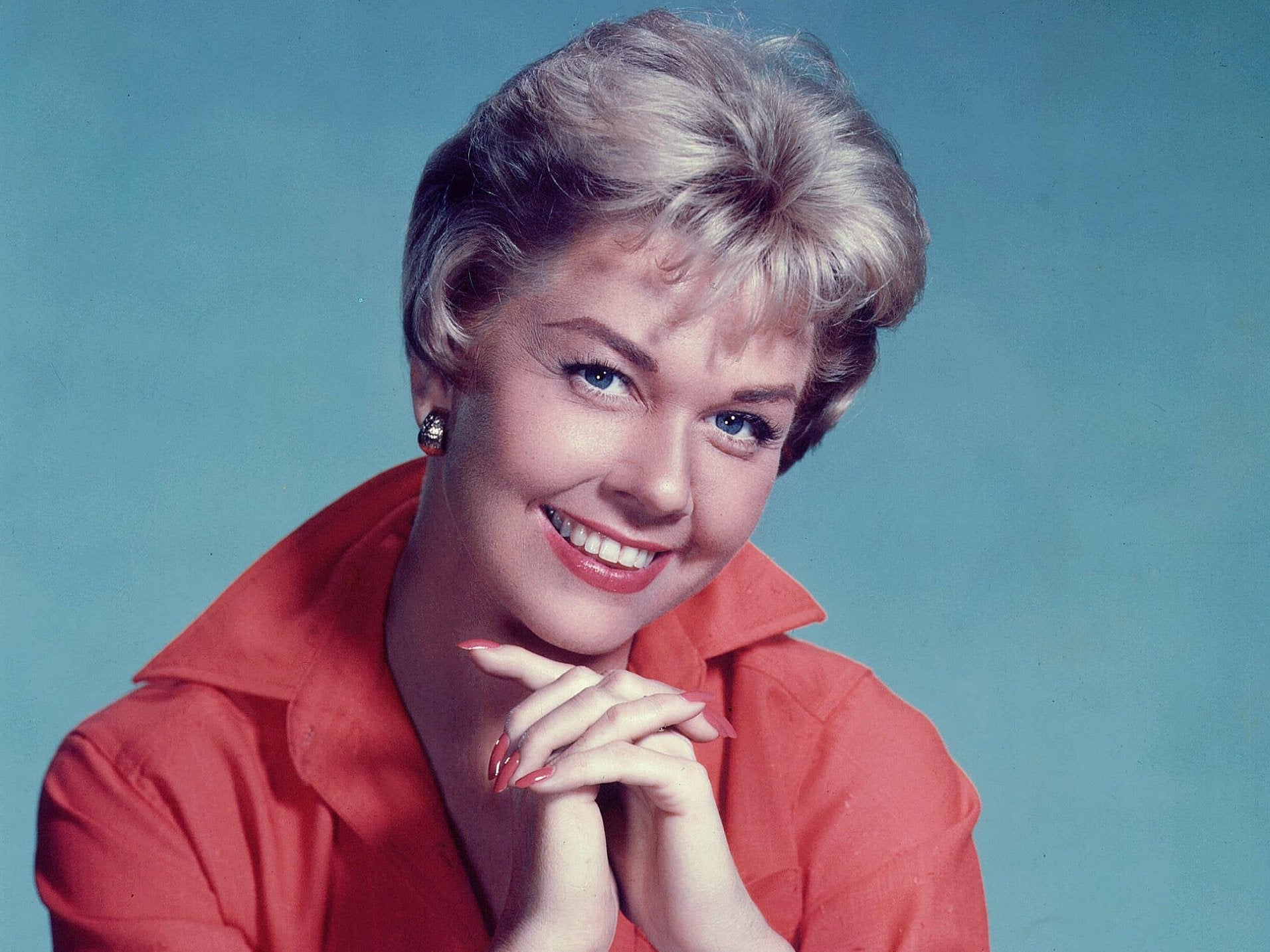Doris Day tribute: American icon was much more than her wholesome image
After the death of the Hollywood actor and singer aged 97, Clarisse Loughrey looks back at the star who never gave up


Your support helps us to tell the story
From reproductive rights to climate change to Big Tech, The Independent is on the ground when the story is developing. Whether it's investigating the financials of Elon Musk's pro-Trump PAC or producing our latest documentary, 'The A Word', which shines a light on the American women fighting for reproductive rights, we know how important it is to parse out the facts from the messaging.
At such a critical moment in US history, we need reporters on the ground. Your donation allows us to keep sending journalists to speak to both sides of the story.
The Independent is trusted by Americans across the entire political spectrum. And unlike many other quality news outlets, we choose not to lock Americans out of our reporting and analysis with paywalls. We believe quality journalism should be available to everyone, paid for by those who can afford it.
Your support makes all the difference.To listen to Doris Day’s voice feels like watching rays of sunshine break through the clouds. Its warmth and openness invites you to share in her “Secret Love”, from 1953’s Calamity Jane. In other songs like “Que Sera Sera” or “High Hopes”, Day feels like a friend coming to sit by your side, with a wise word, a pat on the back, and a reminder to keep your head held high. While her legacy will always be tied to the wholesome, conservative image of 1960s white America that so many of her films were too eager to sell, Day herself has come to represent something more: steadfast optimism.
Although Day, who has died aged 97, may have initially disliked what has become her signature song, “Que Sera Sera (Whatever Will be, Will be)”, it’s a fitting representation of how she lived her life. She may have become Hollywood’s biggest female star by the early 1960s, but the life she faced behind the camera wasn’t as smooth as her beaming smile always seemed to suggest. Born Doris Mary Anne von Kappelhoff on 3 April 1922, she first wanted to be a dancer, until a car crash left her with serious injuries to her right leg and ended her career before it barely began. Day, however, didn’t allow the accident to curb her spirit. Instead, she would while away her days in recovery singing along to the radio, discovering she had quite the talent for it.
At 15, she joined up with a local bandleader, Barney Rapp. In 1941, a teenage Day married trombonist Al Jorden, but they divorced two years later. She had her only child, Terry, during the marriage. It was after she left Rapp and began to work with Les Brown that she scored her first hit, 1945’s “Sentimental Journey”, with its dreamy tones becoming a favourite with soldiers returning from the front lines, yearning desperately for home.
A gig at a Hollywood party saw her catch the attention of songwriter Jule Styne, who was enraptured by her rendition of “Embraceable You” and invited her for a screen test. She landed her first part, in 1948’s Romance on the High Seas, followed by several more appearances in popular musicals, including 1953’s Calamity Jane, a film that helped cement what James Cagney once called “the epitome of guilelessness”. During the late 1950s and early 1960s, she shifted towards comedy, as the gutsy romantic lead playing off a string of Hollywood’s most bankable men, including Clark Gable, Jack Lemmon, Cary Grant, James Garner, David Niven, and most importantly, Rock Hudson.
While there were three Hudson/Day films – Pillow Talk, Lover Come Back, Send Me No Flowers – Day wrote in her autobiography that the pair became friends on their very first meeting and remained close for the rest of Hudson’s life. One of his last appearances on TV, after his Aids diagnosis in 1984, was on Day’s cable TV show. The pair had an easy chemistry that played into the innocence of their onscreen romances. Hudson once said of movie partnerships: “The two people have to truly like each other, as Doris and I did, for that shines through, the sparkle, the twinkle in the eye as the two people look at each other.”

Yet, behind the scenes, Day would discover in 1968, after the sudden death of her third husband Martin Melcher, that he and lawyer Jerome Rosenthal had squandered her earnings and left her deep in debt. Furthermore, he’d signed her up for a TV sitcom – an idea she’d always hated. Yet, she soldiered on, headlining five years of The Doris Day Show, after demanding CBS offer her full creative control. The series is actually considered something of a pioneering production, notable for its season-to-season changes in cast and format, while also serving as a predecessor to The Carol Burnett Show. Although she attempted to launch a talk show in 1985, it was abruptly cancelled after 26 episodes. She retired from the industry soon after, dedicating her life to animal rights advocacy and establishing two charities, the Doris Day Animal League and the Doris Day Animal Foundation.
It’s this image of Day that’s slowly overriding the more neutered one that Hollywood has tried to present, as new generations of fans have found new ways to reinterpret her body of work. Her tomboy character in Calamity Jane, who treats femininity with all the wild bemusement of an alien specimen, has been accepted as a subversive entry into queer cinema, with many interpreting “Secret Love” as being directed towards another woman, despite the fact Calamity actually ends up with the film’s leading man.
Day’s life was marked by moments she couldn’t control: even the conservative image Hollywood built for her didn’t ring true with the passionate, empathetic woman who spent her life looking out for others, human or animal. But, as Day once described herself: “I always said I was like those round-bottomed circus dolls – you know, those dolls you could push down and they’d come back up? I’ve always been like that. I’ve always said, ‘No matter what happens, if I get pushed down, I’m going to come right back up.’”
Join our commenting forum
Join thought-provoking conversations, follow other Independent readers and see their replies
Comments